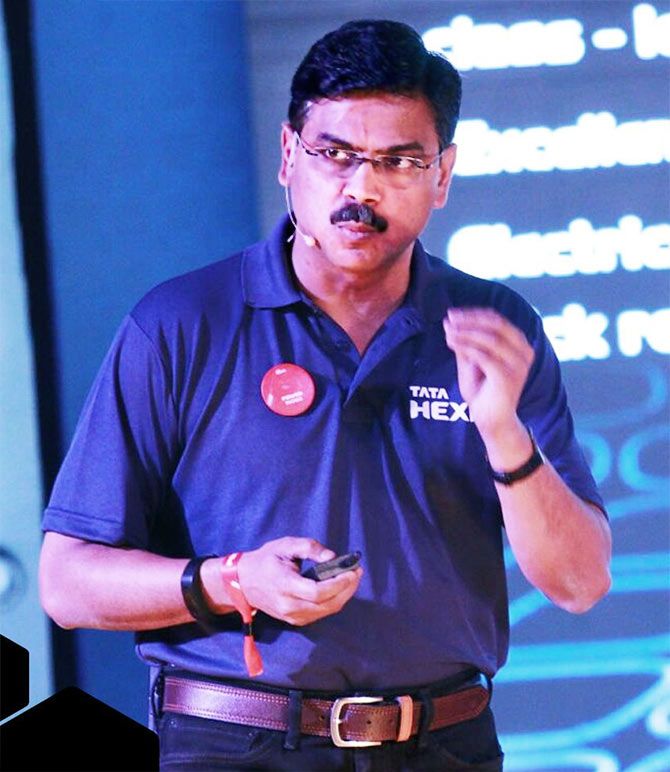The commercial vehicle business is one of the mainstays for the Tata group, highlighting the importance of Girish Wagh's appointment.
Abhineet Kumar reports.

Girish Wagh admits he is not an automobile enthusiast like some of his colleagues.
Yet, for Tata Motors, he is the man to ride the company out of the challenges it is currently facing.
Tata Motors reported a 51.2 per cent share in the medium and heavy commercial vehicles market in 2016-2017, about 7 per cent lower than in 2013-2014.
Its competitors, meanwhile -- including Ashok Leyland, Mahindra and Mahindra and Eicher -- have grown their sales with products that offer better load capacity and fuel efficiency.
"Tata Motors' reaction to the competition in the commercial vehicles segment has not been adequate," says a Bombay House insider reacting to changes at Tata Motors.
Last month, Ravindra Pisharody, executive director (commercial vehicle), resigned citing personal reasons. He was elevated to this position in June 2012 after joining as vice-president (commercial vehicles) in 2007.
The commercial vehicle business is one of the mainstays for the Tata group, says the insider, highlighting the importance of Wagh's appointment as head of the commercial vehicle business earlier this month.
Wagh, who was heading the product line of the medium and commercial vehicle business, has also been included in the executive committee at Tata Motors.
Wagh, 46, is a mechanical engineer from the Maharashtra Institute of Technology in Pune.
He joined Tata Motors in 1992 straight from the campus of the S P Jain Institute of Management and Research, where he did a post graduate programme in manufacturing.
In his 24 years at Tata Motors, Wagh has been part of several landmark projects: The company'first passenger car, Indica, small truck, Ace, and its biggest product design effort, the Nano.
His initiation in Tata Motors was with the trucks division where he had his first brush with product design.
Later, he transitioned from manufacturing to vendor development.
In 1998, he was selected for the company's executive selection scheme programme and moved to business excellence.
In 2000, when Ravi Kant, then the managing director, asked him to move on to full scale product design with mini truck Ace, he was reluctant.
But Kant managed to convince him and Ace rolled out in May 2005, beating a recession in the commercial vehicle market.

His efforts were noticed not only by Kant, but also by Ratan Tata.
He was moved to the small car division in August 2005.
Wagh, as a project head, shared the stage with Tata and Kant when the Nano was unveiled at the Auto Expo in 2008.
Though the Nano has not been a success for Tata Motors, with only 7,591 units sold in 2016-2017, it did establish the company's ability to innovate.
It also made Wagh the 'go-to man' for new products and design.
In his new role, Wagh has his work cut out for him.
Last year, Tata Motors set a goal to get into the top three global commercial vehicle makers club by 2019. It is currently in the top 10.
That will not be achievable unless the competition at the domestic front is handled successfully. \
The company also wants to be among the top three passenger vehicle makers globally by 2019.
His moves will be closely watched not just by Tata Motors Managing Director Guenter Butschek, but also Bombay House, the headquarters for the $104 billion Tata group.
The challenge with the company though goes beyond products and will require Wagh to summon his business skills.
"The company needs to compete with better products in each segment with the help of better technology and understanding changing customer aspiration," says Abdul Majeed, partner, Pricewaterhouse.
"Basically a holistic approach is required taking all elements, including distribution and service, if it has to get into top three club globally."











